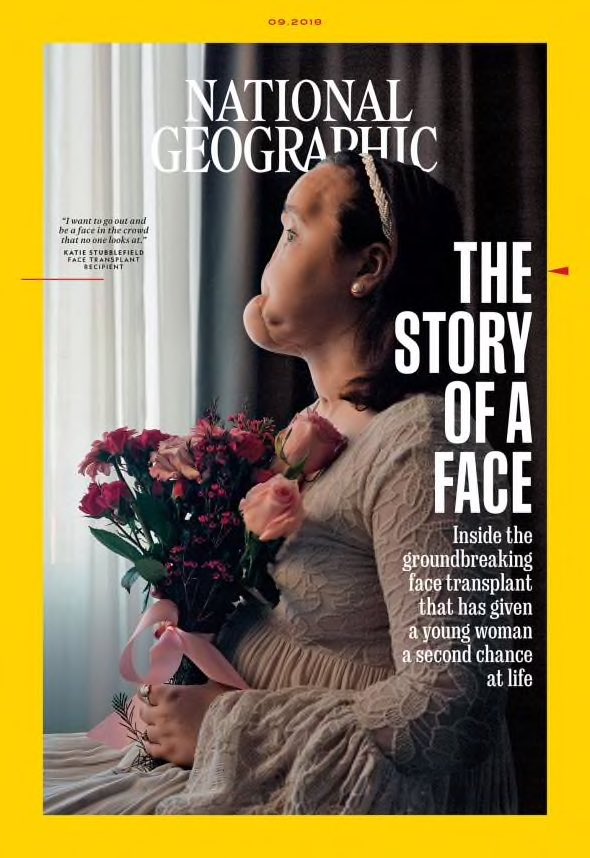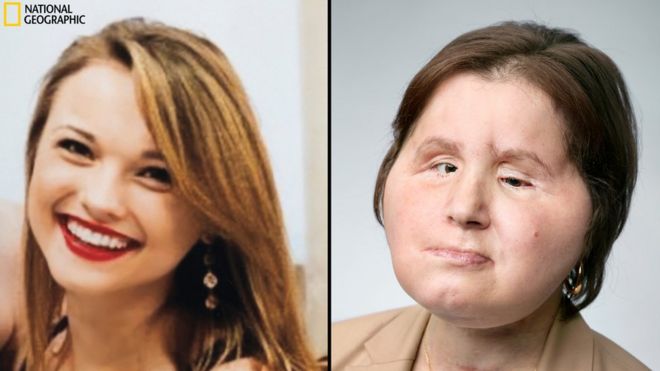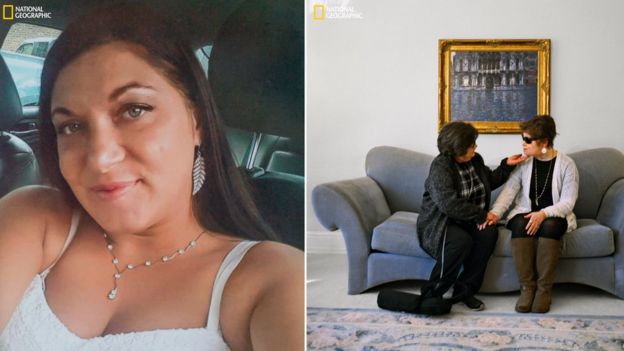Suicide, the Impulse of Despair : Survival the Compulsion to Live

"When you do a face transplant, you’re trying to match a dead person’s face on another person. And there are no two people alike, so the bone height is not the same."
"Even if you practice on cadavers, obviously the person that you are getting right now might not be an exact match, so you still have to match those two people to fit as a puzzle."
"Of all the surgeries that we do as a surgeon, this is the most gratifying, because you’re giving a person a new start on life."
"[Pre-surgery, over 20 cadaver dissections were done to] perfect and optimize the results for Katie. By the time you come to the surgery, you are basically executing what you practiced."
Dr. Gaby Doumit, plastic surgeon and cranial facial surgeon, former director of craniofacial surgery, Cleveland Clinic
 |
| Ten surgeons were on a medical team that spend 31 hours performing a face transplant on Katie Stubblefield. |
"Her injury may have been the worst injury of any face transplant injury ever. We can't necessarily make all of her muscles move again. Her tongue is not working well because she lost a lot of tongue muscle and nerves."The pretty young woman of eighteen is now 22 years old. Katie Stubblefield decided at 18 that her life was no longer worthwhile. Depression leads many young people to despair their condition in life and many decide, like Katie did at 18, to simply forego life. So she took her brother's rifle and shot herself directly in the face and her brother discovered her in his home in Tennessee essentially with no face left, covered in blood and gore, her brain fully exposed. The bullet that failed to kill her tore through her forehead, nose, sinuses, jaw bones and left her eyes badly damaged. But she lived.
"We [the transplant team of 15 specialists] all like her nose. Her lips are pretty."
"My first wish for Katie is to be happy. That's number one, but beyond that, I'd like her to have some level of normalcy."
"Then, she can do all that and become a spokeswoman for so many aspects - for how to be strong in the face of adversity and not to make a singular decision dictate who you are."
Dr. Brian Gatsman, supervisor of transplant team, Cleveland Clinic
Surgeons in the Memphis hospital that responded to the emergency that Katie had become made an effort to cover her facial wounds with a tissue graft taken from her abdomen. That effort failed and when she arrived at the Cleveland Clinic it was with "her brain basically exposed". And there, 22 different operations took place in the hope that her face could be repaired, none of them approaching close to restoring what she looked like before she decided to die. A face transplant might work where plastic surgery failed, it was determined.
She waited, and she waited and three years passed during which two possible donors failed to fully materialize, and then a third was found, that of 31-year-old Adrea Schneider who had died from a drug overdose and who had been a registered organ donor. Adrea's grandmother gave her donation consent. Her granddaughter's heart, lungs, kidneys and liver were donated as well to other patients awaiting transplants; one lost life led to seven saved across the United States in this single, unfortunate/fortunate exchange.
A 31-hour surgery, using two separate operating rooms took place in May of 2017 at Ohio's Cleveland Clinic when Katie became the 40th individual known to have received a new face and one of the youngest. The bullet that failed to kill Katie but that caused such horrible damage was the cause of a traumatic brain damage and her hormones and sodium levels were also severely impacted, along with frontal lobe function. The team created a nasal passage, patched her face, formed jawbones with the use of her fibula and titanium. Her eyes were moved closer together and part of her thigh and Achilles tendon used to help patch the wounds.
 |
| Family/Martin Schoeller -- Katie, before her catastrophic injury and after her facial transplant |
 |
| Benningdon Family/Maggie Steber/ National Geographic
|
Labels: Bioscience, Suicide, Surgery

0 Comments:
Post a Comment
<< Home